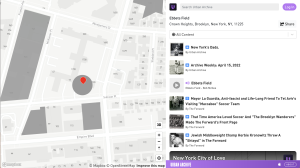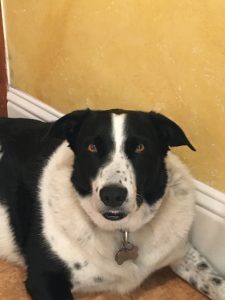While reading the 2021 EDUCAUSE Horizon Report on Teaching & Learning, the mandate for Open Education Resources, or OER, caught my attention as a cutting edge library (esp. academic) development to implement unrestricted access to free resources, with the potential to improve equity and increase knowledge sharing across disciplines (Educause, 2021, p25-26). I have been loosely familiar with the concept OER, having previously had a housemate who was an OER librarian at a community college, but my research for this module truly cemented an excitement for the possibilities OER offer to move beyond commodified knowledge and copywriter/publisher gatekeeping. The concept of ‘open’ education resonates with me as a value we should be working towards in academic libraries; we should be disentangling public institutions from profit seeking corporations. I realize this is nearly impossible with the monopoly-like stronghold of journals like Elsevier and textbook publishers like McGraw Hill and the limitations of open licensing/copyright, BUT I think it is worthy to work towards as librarians and students.
What is OER?
According to David Wiley, PhD and Creative Commons Education Fellow, Open Educational Resources describe:
“copyrightable work (traditionally excluding software that is either (1) in the public domain or (2) licensed in a manner that provides everyone with free and perpetual permission to engage in the 5R activities:
-
- Retain: make, own, and control a copy of the resource (e.g., download and keep your own copy)
- Revise: edit, adapt, and modify your copy of the resource (e.g., translate into another language)
- Remix: combine your original or revised copy of the resource with other existing material to create something new (e.g., make a mashup)
- Reuse: use your original, revised, or remixed copy of the resource publicly (e.g., on a website, in a presentation, in a class)
- Redistribute: share copies of your original, revised, or remixed copy of the resource with others (e.g., post a copy online or give one to a friend)
OER relate to digital works and online licensing access. Creative Commons is the most popular ‘open’ access licensing for OER collections, but there are other methods as well (to be honest, I was pretty overwhelmed reading over some of the legal jargon about licensing, but I am very curious to decipher the laws outside of this short blog context!). With the permission of free use and 5R activities in perpetuity, OER have powerful potential to increase access to tools and information globally, decrease fees and debt for students, support greater inclusion for people with disabilities, and improve digital teaching and learning curricula (UNESCO, 2022). Universities, like College of the Canyons in Southern California, have created OER databases for students to access textbooks free of cost, while other websites make OER collections accessible to anyone. Open Textbook Library and OER Commons are two digital libraries that pull from OER collections. What makes these digital libraries different from a typical public library the 5Rs; patrons own and can remix, reuse, revise and redistribute the items they procure (with proper attribution)! I see these sites as essential resources to work alongside public libraries in a common mission to serve a diversity of patron needs.
OER and SJSU…
In my personal experience as a student during my undergraduate degree, I was overwhelmed by the cost of textbooks and reading materials and never realized that there was a movement like OER. I grew up using free and accessible education tools like Khan Academy and Quora to supplement my learning, but was unfortunately still saddled with thousands of dollars worth of textbook and reader costs in my undergraduate years. Now as a graduate student, I have avoided spending money on textbooks where I can. I receive 5+ emails per month from the SJSU Campus Bookstore encouraging me to buy “discounted” digital tools, equipment, or books that are still very expensive. SJSU itself estimates that students spend upwards of $2,000+ on textbooks during a single academic year (the average in 2021-22 was $1,948); there does not seem to be a systematic effort to publicize free solutions (SJSU MLK, Jr. Library). Is this because the university is creating a profit off of the textbooks? Or a lack of resources to build and publicize a comprehensive OER database?
In my research for this blog, I was surprised to see that there is an Affordable Learning Solutions webpage and an OER LibGuide on San Jose State University’s MLK, Jr. Library website. It is nice to see that this page exists, but unfortunately there appear to be very few free options for textbooks, from my research on the iSchool page. I wish there was an iSchool student group in support of OER for all! Anyone interested in joining?
College of the Canyons. (N.d.). OER and zero textbook cost. https://www.canyons.edu/academics/onlineeducation/ztc/
EDUCAUSE. (N.d). Open educational resources (OER). https://library.educause.edu/topics/teaching-and-learning/open-educational-resources-oer
EDUCAUSE. (2021). 2021 EDUCAUSE horizon report: teaching and learning edition. https://library.educause.edu/-/media/files/library/2021/4/2021hrteachinglearning.pdf?la=en&hash=C9DEC12398593F297CC634409DFF4B8C5A60B36E#page25
OER Commons. (n.d.). https://oercommons.org/
Open Textbook Library. (N.d). https://open.umn.edu/opentextbooks/books
SJSU Martin Luther King, Jr. Library. (N.d). Affordable Learning Solutions. https://libguides.sjsu.edu/c.php?g=230269&p=1528016
UNESCO. (2022). The 2019 UNESCO recommendations on open education resources (OER). https://unesdoc.unesco.org/ark:/48223/pf0000383205.locale=en
Wiley, D. (N.d.). Defining the “open” in open content and open educational resources. Open content. [Blog]. https://opencontent.org/definition


